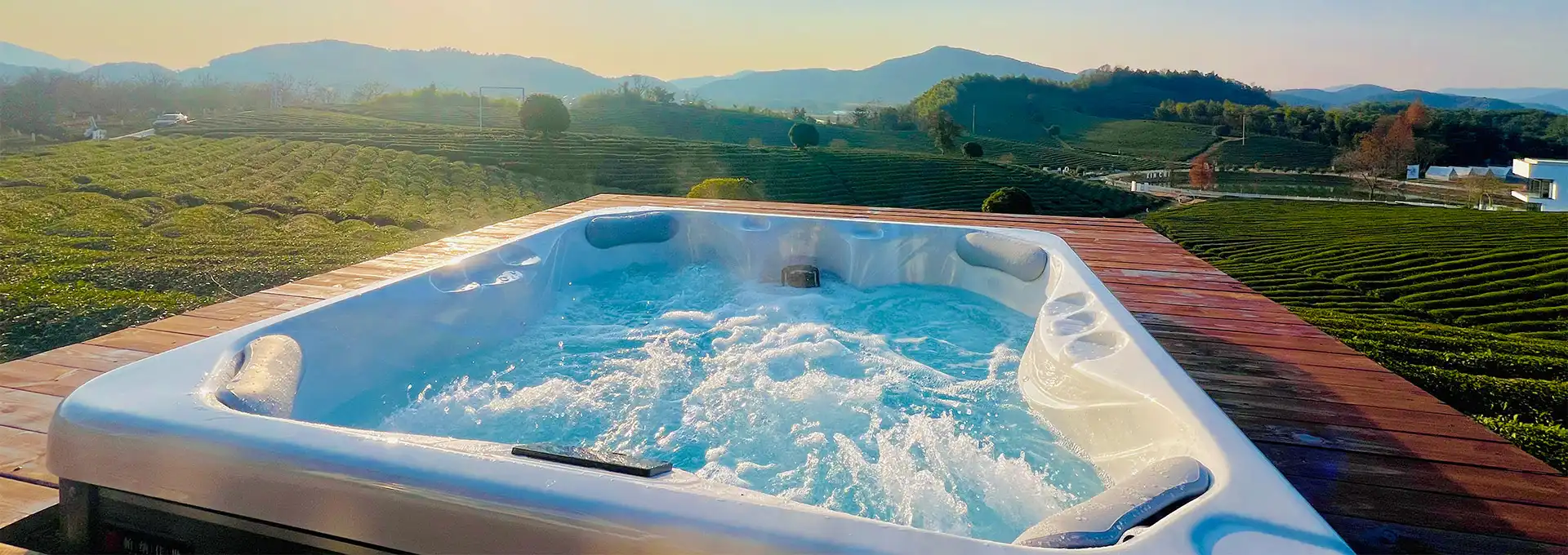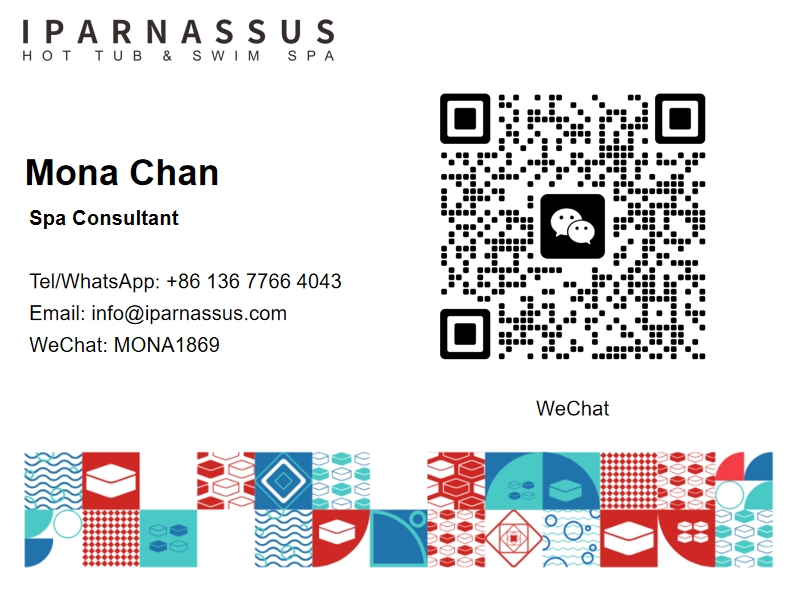How Does a Plunge Cold Tub Boost Athletic Performance?
2025-07-23 17:08:09
In the world of competitive sports and fitness, athletes continuously seek innovative methods to enhance their performance and accelerate recovery. One practice that has gained tremendous popularity among elite athletes, fitness enthusiasts, and weekend warriors alike is cold water immersion through a Plunge Cold Tub. This therapeutic approach involves submerging the body in frigid water typically ranging between 50-60°F for several minutes, triggering powerful physiological responses that can significantly impact athletic performance. Research indicates that regular use of a Plunge Cold Tub may enhance recovery, reduce inflammation, and optimize subsequent training sessions, making it an invaluable tool for anyone serious about their athletic pursuits.
How Long Should Athletes Stay in a Plunge Cold Tub for Optimal Performance?
Understanding the Science of Cold Exposure Duration
The effectiveness of a Plunge Cold Tub largely depends on the duration of exposure, with research suggesting that optimal benefits occur within specific time frames. Spending between five and 15 minutes in 10 to 15-degree Celsius water may be the most effective way to practice cold water immersion or cold plunges. For athletic performance enhancement, the key lies in finding the sweet spot that maximizes physiological benefits without causing excessive stress to the body. "If there is a benefit, it probably comes from the first minute of immersion (also the most dangerous period)," especially for people with underlying health conditions. However, athletes seeking comprehensive recovery benefits typically require longer exposure periods to achieve meaningful results from their Plunge Cold Tub sessions.
Timing Considerations for Different Training Goals
The timing of Plunge Cold Tub usage significantly impacts its effectiveness for various athletic objectives. A 5-10 minute cold plunge can effectively reduce inflammation and soreness without over-cooling muscles. For endurance athletes, pre-workout cold immersion can enhance performance in hot environments by lowering core body temperature, while post-workout sessions focus primarily on recovery acceleration. Cold water immersion within 30 minutes following intense physical activity may yield the most beneficial outcomes, as the body is still in recovery mode. Understanding these temporal considerations allows athletes to strategically incorporate their Plunge Cold Tub into training regimens for maximum benefit. The frequency of use also matters, with many athletes benefiting from 2-3 sessions per week, gradually increasing based on individual tolerance and specific performance goals.
Individual Adaptation and Progressive Protocols
Successful implementation of Plunge Cold Tub therapy requires a gradual approach that allows the body to adapt to cold exposure stress. Beginners should start with shorter sessions at milder temperatures, progressively working toward longer durations and colder conditions as their cold tolerance develops. Start with shorter and milder sessions if you're new to cold immersion, and gradually work your way up to colder temperatures and longer durations as your body adapts. This progressive approach ensures that athletes can safely maximize the benefits of their Plunge Cold Tub while minimizing potential risks. Advanced practitioners may eventually tolerate sessions lasting 10-15 minutes at temperatures approaching 50°F, but such extremes should only be attempted after establishing a solid foundation of cold adaptation and under proper supervision.
What Temperature Should a Plunge Cold Tub Be Set at for Maximum Athletic Benefits?
Optimal Temperature Ranges for Performance Enhancement
The temperature setting of a Plunge Cold Tub plays a crucial role in determining the magnitude and type of physiological responses that contribute to athletic performance enhancement. Cold water causes vasoconstriction, which can help reduce swelling and inflammation in muscles and joints. Research consistently demonstrates that water temperatures between 50-60°F (10-15°C) provide the ideal balance between therapeutic benefit and safety for most athletes. At these temperatures, the Plunge Cold Tub triggers powerful vasoconstriction followed by compensatory vasodilation upon warming, creating a pumping effect that enhances circulation and nutrient delivery to working muscles. This temperature range is cold enough to stimulate the desired physiological responses while remaining within safe parameters for regular use.
Temperature-Specific Physiological Responses
Different temperature ranges within the Plunge Cold Tub spectrum produce varying degrees of physiological adaptation that can be tailored to specific athletic goals. The cold can trigger responses in your body, such as decreased metabolic activity, alterations in hormone production and blood flow, and activation of the immune system. Temperatures closer to 60°F may be more suitable for sensitive individuals or those new to cold therapy, while temperatures approaching 50°F deliver more intense stimulation for experienced users seeking maximum benefit. The Plunge Cold Tub's ability to maintain consistent temperature throughout the session ensures reliable and predictable responses, allowing athletes to fine-tune their protocols based on specific training phases and recovery needs.
Safety Considerations and Temperature Monitoring
While pursuing optimal performance benefits from a Plunge Cold Tub, athletes must prioritize safety through careful temperature monitoring and gradual progression. If someone adds ice to their bathtub and temporarily submerses themselves into water that is only 50 to 60 degrees Fahrenheit, there likely isn't a big level of concern or risk for any adverse effects. However, temperatures below 50°F significantly increase the risk of cold shock response and should be approached with extreme caution. Professional-grade Plunge Cold Tub systems offer precise temperature control, eliminating guesswork and ensuring consistent, safe exposure. Athletes should also consider environmental factors, individual health status, and current fitness level when determining their optimal temperature settings, consulting with healthcare providers when necessary.
Does a Plunge Cold Tub Help with Muscle Recovery and Reduce Soreness?
Mechanisms of Enhanced Muscle Recovery
The muscle recovery benefits of a Plunge Cold Tub stem from several interconnected physiological mechanisms that work synergistically to accelerate the restoration of normal muscle function. Research indicates that icy water may have a positive effect on recovery after exercise by reducing inflammation and soreness. When athletes immerse themselves in a Plunge Cold Tub, the cold temperature causes immediate vasoconstriction, which helps flush metabolic waste products like lactic acid from the muscles while simultaneously reducing inflammatory markers. Cold plunge therapy reduces soreness by constricting blood vessels, flushing out waste products like lactic acid, and minimizing swelling. This process creates an environment conducive to faster recovery, allowing athletes to return to training sooner and with greater intensity than would be possible through passive recovery alone.
Evidence-Based Recovery Outcomes
Scientific research consistently demonstrates the effectiveness of Plunge Cold Tub therapy for reducing perceived muscle soreness and accelerating functional recovery. A 2012 Cochrane review of 17 different studies of the effects of cold water immersion on muscle soreness found some evidence that a cold plunge really did make people feel less sore, and the relief lasted for up to four days post-workout. These findings are particularly significant for athletes who train frequently or compete in multi-day events where rapid recovery is essential for maintaining performance levels. Cold water immersion has been shown to improve sprint performance up to 24 hours after an intense bout when tested on athletes engaged in a tournament simulation. The Plunge Cold Tub's ability to provide consistent, controlled cold exposure ensures that athletes can reliably access these recovery benefits as part of their regular training routine.
Strategic Implementation for Recovery Optimization
To maximize recovery benefits from a Plunge Cold Tub, athletes must consider timing, frequency, and integration with other recovery modalities. If your are looking to recover from some form of aerobic capacity or endurance based activity (Running, Cycling, Triathlons, Sports like rugby, Football, swimming, boxing, jujitsu, HYROX, gymnastics etc) you can plunge immediately after your session to remove the inflammation and promote recovery. However, for strength and muscle building goals, timing becomes more critical as immediate post-workout cold exposure may interfere with the inflammatory processes necessary for adaptation. Generally speaking, if your goal is to build the strength or size of your muscles, it's best to take an ice bath 24 to 48 hours after your training session. Understanding these nuances allows athletes to strategically incorporate their Plunge Cold Tub sessions to optimize recovery while supporting their specific training objectives.
Conclusion
The integration of a Plunge Cold Tub into athletic training regimens represents a scientifically-backed approach to enhancing performance and recovery. Through strategic implementation considering duration, temperature, and timing, athletes can harness the powerful physiological responses triggered by cold water immersion to reduce muscle soreness, accelerate recovery, and potentially improve subsequent performance. While individual responses may vary, the growing body of research supports the inclusion of controlled cold exposure as a valuable tool in the modern athlete's recovery arsenal.
Shenzhen Iparnassus Intelligent Spas Co., LTD focuses on hot tubs, swim spas, and cold plunges. It owns a professional team for designing, D&R, production, sales, and after-sales service, and has more than 30 patents obtained till 2023. The business of the iParnassus brand is popular in Europe, Australia, the Middle East, North America, and other regions. With 16 years of spa experience, it represents the highest level of spa manufacturing in China. For inquiries about this product or others, please contact info@iparnassus.com for dedicated service.
References
1. Roberts, L. A., et al. (2015). Post-exercise cold water immersion attenuates acute anabolic signalling and long-term adaptations in muscle to strength training. Journal of Physiology, 593(18), 4285-4301.
2. Machado, A. F., et al. (2016). Can water temperature and immersion time influence the effect of cold water immersion on muscle soreness? A systematic review and meta-analysis. Sports Medicine, 46(4), 503-514.
3. Poppendieck, W., et al. (2013). Cooling and performance recovery of trained athletes: a meta-analytical review. International Journal of Sports Physiology and Performance, 8(3), 227-242.
4. Bleakley, C., et al. (2012). Cold-water immersion (cryotherapy) for preventing and treating muscle soreness after exercise. Cochrane Database of Systematic Reviews, 2, CD008262.
5. Versey, N. G., Halson, S. L., & Dawson, B. T. (2013). Water immersion recovery for athletes: effect on exercise performance and practical recommendations. Sports Medicine, 43(11), 1101-1130.
6. Lindsay, A., et al. (2017). The physiological response to cold-water immersion following a mixed martial arts training session. Applied Physiology, Nutrition, and Metabolism, 42(5), 529-536.



